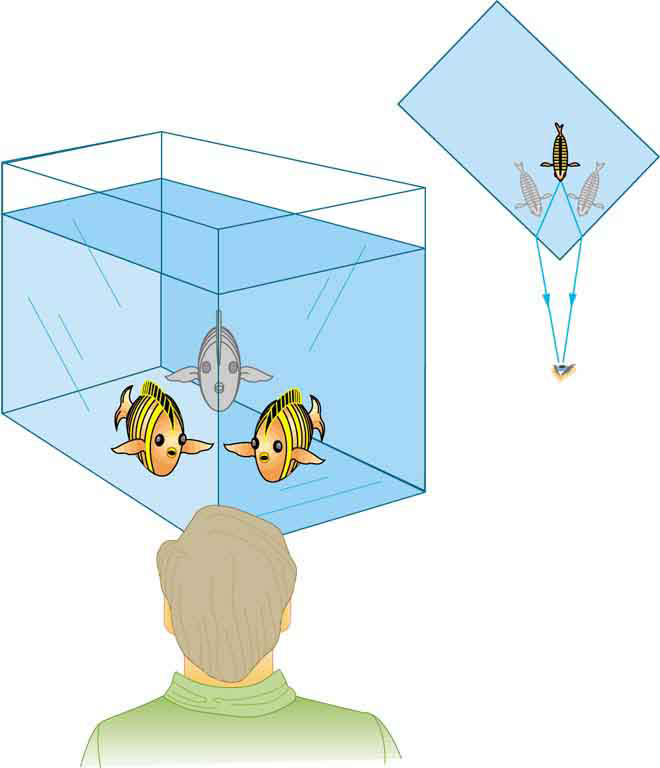| << Chapter < Page | Chapter >> Page > |
By the end of this section, you will be able to:
The information presented in this section supports the following AP® learning objectives and science practices:
It is easy to notice some odd things when looking into a fish tank. For example, you may see the same fish appearing to be in two different places. (See [link] .) This is because light coming from the fish to us changes direction when it leaves the tank, and in this case, it can travel two different paths to get to our eyes. The changing of a light ray’s direction (loosely called bending) when it passes through variations in matter is called refraction . Refraction is responsible for a tremendous range of optical phenomena, from the action of lenses to voice transmission through optical fibers.
The changing of a light ray’s direction (loosely called bending) when it passes through variations in matter is called refraction.
The speed of light not only affects refraction, it is one of the central concepts of Einstein’s theory of relativity. As the accuracy of the measurements of the speed of light were improved, was found not to depend on the velocity of the source or the observer. However, the speed of light does vary in a precise manner with the material it traverses. These facts have far-reaching implications, as we will see in Special Relativity . It makes connections between space and time and alters our expectations that all observers measure the same time for the same event, for example. The speed of light is so important that its value in a vacuum is one of the most fundamental constants in nature as well as being one of the four fundamental SI units.


Notification Switch
Would you like to follow the 'College physics for ap® courses' conversation and receive update notifications?